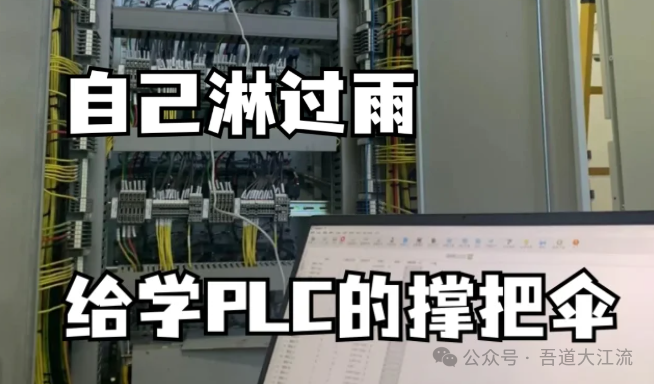
PLC Data Consistency: Transaction Processing Mechanism to Ensure Operational Atomicity!
Introduction
Hello everyone! Today we are going to discuss a crucial yet often overlooked topic in industrial automation — PLC data consistency. Imagine, when your production line is executing a critical operation, and suddenly there is a power outage, what happens to the data?Don’t worry! With the transaction processing mechanism introduced today, your PLC program will be able to ensure operational atomicity like a bank transfer, either completely successful or as if nothing happened! Want to know how this is achieved?Keep reading!
What is Data Consistency?
Let’s start with a real-life example.Suppose you are shopping online:
-
You click the “Pay” button, and the money is deducted from your account
-
But the merchant hasn’t received the payment
This is data inconsistency!
In PLCs, data consistency means:
-
All related data must either be updated successfully at the same time (e.g., valve status + counter value + alarm flag)
-
Or all remain unchanged (as if nothing happened during a power outage)
<span>Red Highlight:</span> “In critical control processes, data inconsistency can lead to catastrophic consequences — for example, recording ‘filled’ while not triggering the ‘capping’ command simultaneously!”
Why is a Transaction Processing Mechanism Needed?
You might ask: “My PLC program has been running for years without issues?”
Let’s illustrate with threegruesome cases:
| Scenario | Traditional Method Risks | Transaction Mechanism Solutions |
|——-|————–|——————|
| Recipe Switching | Power outage during new recipe loading, causing parameter confusion | Atomic Update: Either all change or keep the old recipe |
| Batch Counting | Counter +1 but log not recorded, leading to production data loss | Transaction Commit: Count and log bound updates |
| Safety Interlock | Partial device status updates delayed, creating safety vulnerabilities | Consistency Snapshot: All device statuses switch synchronously |
<span>Blue Emphasis:</span> “Siemens S7-1500 test data shows that with transaction processing, the data recovery rate during unexpected power outages reaches 99.99%!”
Four Core Implementation Technologies
1. Write-Ahead Logging (WAL)
Like ablack box in an airplane, first record the modifications to be made:
// Siemens SCL Example
BEGIN_TRANSACTION;
LOG_CHANGES_TO_NVRAM; // Step 1: Write log
UPDATE_VALVE_STATUS; // Step 2: Execute operation
MODIFY_PRODUCTION_COUNT;
IF ALL_SUCCESS THEN
COMMIT_TRANSACTION; // Step 3: Confirm commit
ELSE
ROLLBACK; // Step 4: Rollback on failure
END_IF;2. Shadow Memory
“Twin Backup” strategy:
-
All modifications are first completed inshadow memory
-
After verification, switch to main memoryat once
-
Rockwell ControlLogix’s AOI function is based on this principle
3. Checksums and Validation
Locking data with a “safety lock”:
# Pseudocode Example
def transaction_update():
old_checksum = calculate_checksum(data_block)
make_changes() # Execute modifications
new_checksum = calculate_checksum(data_block)
if new_checksum != expected_value:
restore_from_backup(old_checksum) # Automatic rollback4. Hardware-Level Support
New PLC’s black technology:
-
Mitsubishi iQ-R seriesMRAM non-volatile memory
-
Beckhoff X20 system’spower failure protection registers
-
Omron NJ/NX’sinstant backup function
Practical Case: Pharmaceutical Factory Filling Line Transformation
Problem Background:
A vaccine production line involves200+ parameters for each recipe switch, and has previously scrapped entire batches due to power outages
Solution:
-
Adopt athree-phase transaction protocol:
-
Preparation Phase: Lock relevant data blocks
-
Execution Phase: Update all parameters in shadow memory
-
Commit Phase: Atomic switch within 0.5ms
Effect Comparison:
| Metric | Before Transformation | After Transformation |
|——|——–|——–|
| Parameter Error Rate | 1.2% | 0.001% |
| Switch Time | 120ms | 85ms |
| Exception Recovery Time | 15min | Automatic Recovery |
<span>Red Alert:</span> “A system without transaction processing is like a race car driver without a seatbelt — the faster you go, the greater the risk!”
Pitfall Guide
Three Major Traps to Avoid:
-
Long Transactions (>100ms): Will block other tasks
-
Nesting Transactions: Some PLC models do not support
-
Excessive Logging: Leads to rapid depletion of storage space
Best Practices:
✅ Single transactions should involve no more than 8 data blocks
✅ Addtimeout rollback mechanism for critical transactions
✅ Regularly clean up committed transaction logs
Interactive Challenge
-
In your PLC system, which partmost needs transaction protection? Is it recipe management? Batch tracking? Or safety interlocks?
-
What hardware-level transaction support features have you used in PLCs? Share your experiences!
-
If you encounter atransaction deadlock, how would you troubleshoot it?
Conclusion
Remember: In the era of Industry 4.0, data consistency is not optional, but anecessity for survival! With the transaction processing mechanism introduced today, your PLC program will gain:
🔹 Bank-level data reliability
🔹 Millisecond-level fault recovery
🔹 Scalability for future upgrades
<span>Blue Encouragement:</span> “Starting today, let every operation of your PLC be as precise and reliable as a Swiss watch!”
Feel free to share your practical experiences or questions in the comments section, and let’s drive the reliability revolution in industrial control together! 🚀
Click to shareClick to saveClick to viewClick to like